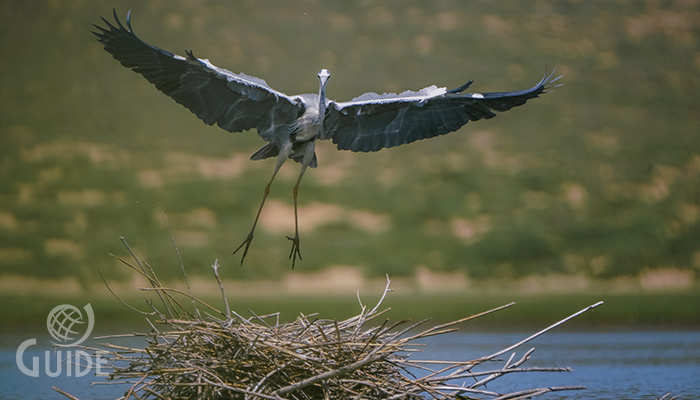
Russian: Серая цапля
German: Graureiher
French: Heron cendre
Mongolian: Хөх дэглий
Japanese: アオサギ (Ao-sagi)
Body length: 84-102cm
Wing span: 155-175 cm
Breeding visitor
Breeding season: May-August
Egg number: 3-5 (occasionally 2-7)
Egg color: Non-glossy pale greenish-blue
Brood: 1 per year
Global status: Least Concern
Regional status: Least Concern
Food: Small mammals, pas-serine chicks,
frogs, fishes, aquatic invertebrates.
Habitat: Breeds
in colonies, or sometimes solitarily, in woodland with tall trees beside lakes
and brackish sea-bays. Waits patiently, stock-still, for prey (mostly fish) on
lakeshores and riversides; rests on one leg in shallow water, often at edge of
reeds. Hardy, just retreats from ice in N, but some migrate to W Europe. Nest a
flat basket of sticks in tree crown.
Identification: Very
big, strongly built heron, mostly medium grey above and greyish-white below.
Distinguished from Crane by retracted neck in flight, and often when standing.
Bill straight, powerful, greyish-yellow, legs greyish-yellow or grey. Flies
with slow, somewhat irregular beats, all the time with wings strongly bowed,
often high up. Upperwings bicoloured, grey with black remiges and
primary-coverts; also two paler patches at carpal, clearly visible in front
view.
- Adult: Forehead,
crowncentre and head-sides white; crown-sides and nape black; long, narrow
black nape plume; neck-sides pale greyish-white with black-streaked white
central band.
- Juvenile/1st-winter: Forehead
and crown grey; nape greyish-black with short plume; head-sides and neck-sides
medium grey, as back; neck-centre buffish.